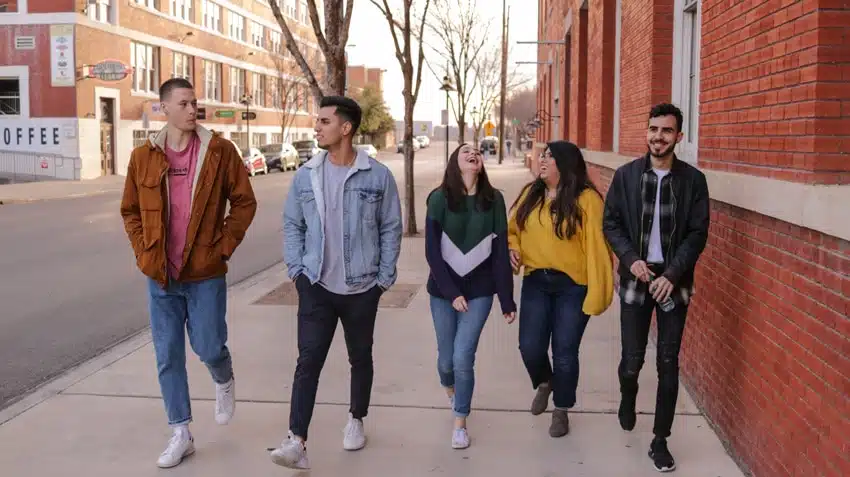Secondary School vs. High School: What Is The Difference?
Updated: November 24, 2025

With so many terms for different stages of education that vary across countries, it’s easy to get confused about what secondary school is. How does it compare to high school, college, preparatory school, or senior secondary school?
No matter what the title is, high school or secondary, your diploma will mean something similar all over the world — that you are ready for the next step of your life. So, let’s take a closer look at what the differences between secondary school and high school are.
Photo by Eliott Reyna on Unsplash
What is a Secondary School?
Secondary school refers to education provided after primary school and before higher, optional education. In many countries, part of secondary school serves as preparation for higher education and is sometimes optional.
What is Secondary School in the U.S.?
Simply put, there is no such thing as secondary school in the United States. Technically speaking, and by definition, middle school (grades 6-8), and high school (grades 9-12) can be considered part of secondary school because they are offered after elementary school. However, it’s rare to hear ‘secondary school’ as a description for these grades.
Is Secondary School the Same as High School?
Yes and no. Secondary school refers to education after elementary school, which in the U.S. includes grades 6 through 12. However, from grade 9 onward, students are typically considered high schoolers. In many English-speaking countries, secondary school is largely equivalent to high school in the U.S.
High School in the U.S. and Canada
Photo by NeONBRAND on Unsplash
In the U.S., high school includes grades 9-12 and is part of compulsory education. After graduating, students typically continue their education in college or university, join the military, or enter the workforce.
In Canada, the system is very similar, with high school covering grades 9-12. However, in Quebec, high school runs from grades 7-11, followed by a two-year pre-university program called CEGEP, which prepares students for university or vocational training.
Secondary School in Australia and New Zealand
In Australia and New Zealand, education is compulsory until grade 10. Secondary school covers up to this point, after which students can choose to enter the workforce or begin an apprenticeship.
Alternatively, they may continue to senior secondary school (grades 11-12), which prepares them for university or vocational training.
Secondary School in the U.K.
There are two types of secondary schools in the United Kingdom. Lower secondary school is compulsory and is for ages 12 to 16. After lower secondary school, a student may continue to upper secondary school for ages 16 to 18. Upper secondary school is seen as preparation for university.
Students in upper secondary typically pursue A-levels or vocational qualifications, which help shape their future academic or career paths.
Secondary School in South Africa
In South Africa, secondary school is also called high school, sometimes called college. It includes grades 8-12, but schooling is only compulsory until grade 10.
After completing grade 10, students can either continue their education or enter vocational training and the workforce.
The flexible nature of the system allows students to choose what aligns with their goals, whether academic or professional.
Is College a Secondary School?
In most cases, no. Secondary school is the education a student receives before college or university. However, some countries such as South Africa use the terms college, secondary school, and high school interchangeably.
What to Do After High School or Secondary School
Congratulations! Finishing high school or secondary school opens up an exciting world of possibilities. Whether you’re considering higher education, jumping straight into a career, or exploring vocational training, your options are broad and diverse. Let’s explore some of the most popular paths to consider after graduation:
Photo by Honey Yanibel Minaya Cruz on Unsplash
1. Higher Education
Colleges and universities are a common option for students all over the world who are after high school or secondary school. You will be able to earn a degree and advance your career in what you love while learning about yourself, making lifelong friends, and having a once-in-a-lifetime experience. If you are worried about the growing student debt, or time commitment in college, don’t be! There are so many flexible, online options for degree programs. University of the People offers US-accredited, tuition-free Associate and Bachelor degrees.
2. Apprenticeships
Apprenticeships are still available today. If you know what you want to do, and understand that real, on the job training under a professional is how to get to the next level of your career, then an apprenticeship might be right for you. Common areas of apprenticeship include construction, health technology, and installation, maintenance and repair jobs.
3. Training Programs
There are many training programs that will lead straight to a specific career, instead of spending time earning a degree. Many people choose this route because it gives them a specific focus that can lead to a good job, in less time than a typical four-year degree. Examples of careers earned from training programs include dental hygienist, IT technician, computer programmer, web developer, paralegal, medical technologist and technician, and therapy assistant, among many others.
4. Enter the Workforce
Many people decide to get their feet wet in a job or career right after high school or secondary school. This is a great option for people who are already qualified for what they know they want to do, for people who want some extra time to think about the right degree program, or save money, or for people who want to spend a bit more time traveling or finding themselves before starting college.
5. Join the Military
This is a big decision, and for many, it’s the right decision. If you love your country and want to serve time for them, while gaining experience and benefits, the military might be right for you. There are many different paths to follow in the military, so you can find the right one for you. In addition, you will get tuition benefits for when you do decide to go to school after the military.
Photo by Juan Ramos on Unsplash
Final Thoughts
Whether you call it secondary school or high school, completing this stage of education is a crucial milestone that opens the door to many exciting opportunities.
From pursuing higher education to entering the workforce, the options are as diverse as your ambitions. No matter where you are in the world, finishing secondary school sets you on the path to success.
As you consider your next steps, remember that the skills, knowledge, and experiences you’ve gained during this time are valuable assets that will serve you well throughout your journey.
FAQs
What is the main difference between secondary school and high school?
Secondary school is a broader term used globally to refer to education after primary school, whereas high school is more commonly used in the U.S. and Canada to describe the last four years of secondary education.
Is secondary school compulsory?
In most countries, secondary school is compulsory until a certain age, usually until around grade 10. After that, students may choose to continue to upper secondary school or pursue other options like apprenticeships or vocational training.
Can I attend college after secondary school?
Yes, graduating from secondary school or high school qualifies you to apply for colleges or universities. Some countries also have specific senior secondary schools that prepare students for university.
What’s the difference between a high school diploma and a certificate?
A high school diploma is awarded to students who meet all graduation requirements. A certificate is given to students who complete high school but may not meet all the academic requirements for graduation.
Are apprenticeships a good alternative to college?
Yes, apprenticeships provide hands-on training in specific fields and can lead to well-paying careers. They’re a good option for students who prefer practical learning or want to enter the workforce more quickly.






